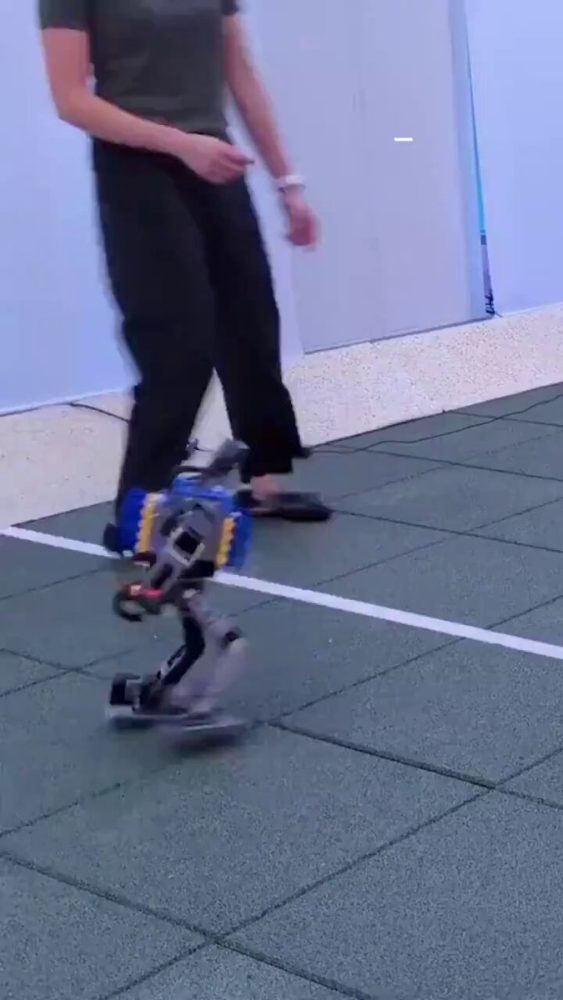Reinforcement learning (RL) has been a transformative force in the field of artificial intelligence (AI), and its application in robotics is pushing the boundaries of what robots can achieve. By leveraging RL, robots are now capable of performing complex tasks with a level of autonomy and adaptability that was previously unattainable. This article delves into how reinforcement learning is revolutionizing robotics, highlighting key advancements and future potential.
The Power of Reinforcement Learning in Robotics
Reinforcement learning is a type of machine learning where an agent learns to make decisions by performing actions and receiving feedback from the environment. This feedback is typically in the form of rewards or penalties, which guide the agent towards optimal behavior over time. In the context of robotics, RL enables robots to learn from their interactions with the physical world, improving their performance through trial and error.
Enhancing Robotic Capabilities
One of the most significant advantages of RL in robotics is its ability to enhance the capabilities of robots in dynamic and unstructured environments. Traditional programming methods require explicit instructions for every possible scenario a robot might encounter. In contrast, RL allows robots to learn and adapt to new situations on their own. This adaptability is crucial for tasks such as navigation, object manipulation, and human-robot interaction.
Real-World Applications
Home Robotics
In home robotics, RL is being used to develop robots that can perform household chores, assist with daily activities, and even provide companionship. For example, researchers at MIT have developed methods for robots to self-correct errors using large language models (LLMs) and imitation learning. This approach enables robots to recover from mistakes and adjust to environmental variations without requiring human intervention or reprogramming. By breaking down tasks into subtasks and utilizing LLMs for natural language understanding and replanning, these robots can operate more reliably in home settings.
Read more about this development here.
Industrial Automation
In industrial settings, RL is being applied to improve the efficiency and accuracy of robotic systems. Google DeepMind, for instance, has developed AI systems that teach robots to perform dexterous tasks by watching humans. This capability is particularly beneficial for tasks that require fine motor skills and precision, such as assembly line work and quality control. By observing human actions and receiving feedback, robots can learn to replicate these tasks with high accuracy.
Learn more about Google DeepMind’s advancements here.
General-Purpose Robotics
Generative AI is also playing a crucial role in advancing general-purpose robotics. Researchers at MIT have demonstrated how generative AI can be used to create more versatile and adaptable robots. By combining policies trained on real-world data with those trained on simulations, robots can achieve a balance between dexterity and generalization. This approach has shown a 20% improvement in task performance, paving the way for more capable general-purpose humanoid robots.
For more insights, visit this link.
Challenges and Ethical Considerations
While the advancements in RL and robotics are promising, there are several challenges and ethical considerations to address. One of the primary concerns is the potential for job displacement due to automation. As robots become more capable, there is a risk that they could replace human workers in various industries. It is essential to develop strategies to mitigate this impact, such as reskilling programs and policies that promote human-robot collaboration.
Another ethical consideration is the safety and control of AI-powered robots. Ensuring that robots operate safely in human environments is critical. This includes developing robust control systems and implementing safety protocols to prevent accidents and misuse.
Future Prospects
The future of reinforcement learning in robotics is bright, with ongoing research and development aimed at overcoming current limitations and unlocking new possibilities. As RL algorithms continue to improve, we can expect to see even more sophisticated and capable robots in various domains, from healthcare and education to space exploration and disaster response.
In conclusion, reinforcement learning is taking robotics to new heights, enabling robots to learn, adapt, and perform complex tasks with unprecedented autonomy. By addressing the challenges and ethical considerations, we can harness the full potential of RL to create a future where robots enhance our lives in meaningful ways.
Check out more AI tools.
Elevate Guest Experience with RoomGenie
Invest your money effortlessly 🚀 Try the NewsGenie tool!
